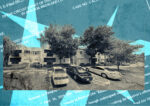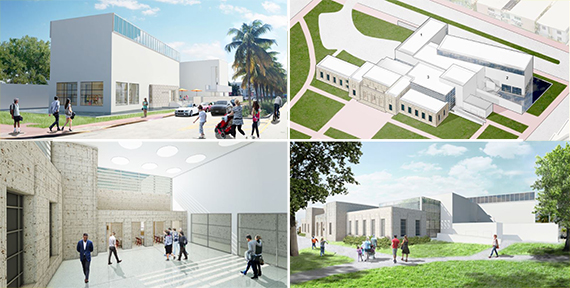The Miami Beach Historic Preservation Board gave an enthusiastic nod to approval plans by the Bass Museum of Art late Tuesday at the board’s monthly meeting.
Back in 2000, the museum added 20,000 feet to the original 1935 historic structure built by Russell Pancost, adding a ramp to the second floor, ground-level galleries and a sculpture terrace designed by Arata Isozaki & Associates.
Those renovations resulted in the demolition of the western wing of the museum.
But since 2008, attendance has doubled at the museum, which anchors the newly revitalized Collins Park neighborhood, and in 2013 the Bass got a $7.5 million expansion grant from the city of Miami Beach. Speaking to the board, Executive Director and Chief Curator Silvia Karman Cubiñá said, “we need our building to catch up with us.”
The new expansion plans designed by architect David Gauld, who worked closely with Arata Isozaki, will add five galleries and three classrooms, or 10,000 square feet to the museum, adding 47 percent more programmable space. A staff report says the plans call for “enclosing a northern ground level courtyard, constructing a new west entrance, a new accessible north entrance and a new south exterior fire stair. “
The plans were unanimously approved by the Historic Preservation Board, although the staff report expressed concerns over a proposal to construct shadow boxes in the original north wing window openings, and called on the museum to develop a comprehensive exterior lighting plan. Earlier plans to demolish a curved staircase with decorative railing in the museum’s south wing have been scrapped and several board members were enthusiastic over plans for a glass-enclosed courtyard terrace.
The Bass will close this Sunday and construction will begin in August for one year to complete the renovations. During that time, some art will be on display across the street at the Miami Beach Regional Library, which will also host some Bass educational programs.
Karman Cubiñá told TRD that when it reopens attendees will be able to grab a coffee or a light lunch, or have a meeting before or after seeing some art and attend drop-in activities or classes. Museums, she said, are no longer places just to go to see art and then walk out.
“Now they are centers of creativity and education and people want interactivity,” Karman Cubiñá said. “The idea is you come for a visit and you stay and do something aside from looking at art.”




